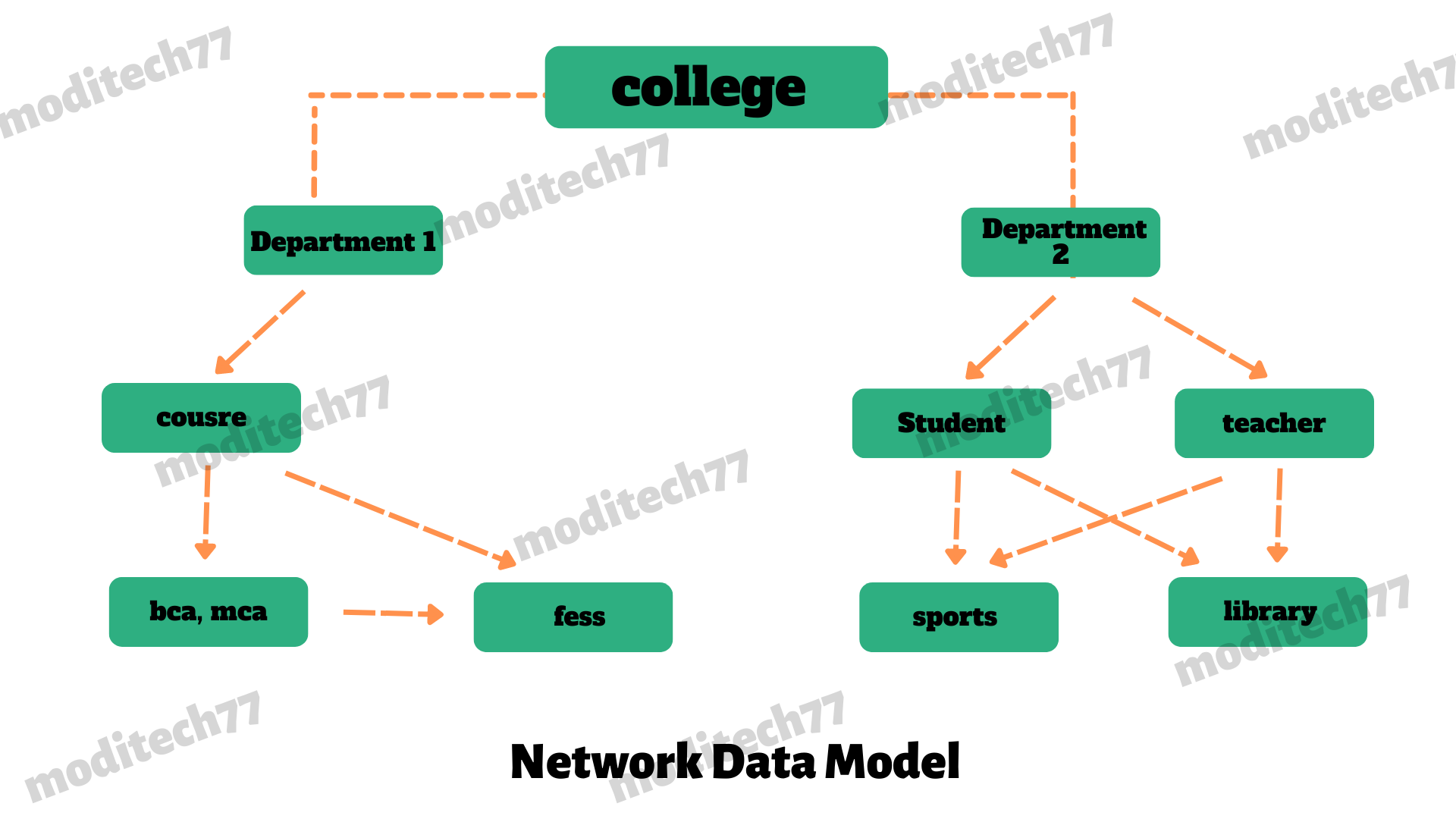Data Model:-
➺ Data model refers to the representation of the logical design and structure of a database.
➺ It is also known as database structures or database structuring techniques.
➺ It is a collection of concepts for describing data.
➺ It shows how the data will be stored, accessed, and update in a database management system.

◆ Types of Data Model in DBMS:-
1. Hierarchical Data Model
2. Network Data Model
3. Object - Oriented data model
4. Relational Data Model
Hierarchical data model

➺Hierarchical data model was developed by IBM in 1968. It is also called IMS( Information Management System ).
➺ It was the first Database management system model.
➺ Hierarchical data model is also called the parent-child data model.
➺ Data is represented using a parent-child relationship.
➺ In the Hierarchical data model data is represented in Tree Structure form.
➺ The hierarchy starts from the Root data and it expands like a tree, adding child nodes to the parent nodes.
➺ In this model, one child cannot see the information of another child
therefore, it's called the single-parent model.
➺ In this model, every record is called Node / Segment.
➺ this model can be used in the mapping of one-to-many relationships.
Network Data Model

➺ This model is an extension of the Hierarchical data model.
➺ This model is developed by Charles Bachman in 1969.
➺ Network data model was most popular before the release of the relational data model.
➺ In this model, data represent in graph Structure.
➺ this model can be used in the mapping of many-to-many relationships.
➺ Network data model follows the parent-child model.
Ϲ One child can have more than one parent.
➺ Child can be without any parents.
Object - Oriented data model
➺Object oriented databases are also called Object Databse Management System (ODBMS).
➺ object database model store object instead of data such as integers, strings, or real numbers.
➺ Objects are used in object-oriented languages such as Smalltalk, C++, Java, and others.
➺ An Object is consist of Attributes and Methods.
➺ Attributes:- It refers to characteristics of an object.
➺ Method:- It refers to the Behaviour of an object.
➺ It is an Extension of ER - Model..
➺ Object-oriented data model based on object-oriented concepts such as - Encapsulation, inheritance, object, class, etc.
➺ In this data and its relationship is represented in a single structure object.
Relational Database model (1970)
➺ It is the most popular and widely used Data Model in DBMS.
➺ The Relational data model was developed by Dr. E.F. Codd - IBM Scientist in 1970.
➺ In this data is represented in table form (rows and Columns) and the table is also known as relations in the relational database model.
➺ Each tuple(row) has a value and Duplicate tuples are not allowed.
➺ Degree :- Number of Attribute / Field / column.
➺ Attribute :- Each column in Table.
➺ Table :- Collection of rows / records and columns / attributes.
➺ Tuple:- Single row which contains a single record.
➺ Cardinality:- Number of rows in the table.
You might like this :-
○ ER-Model in DBMS
○history of computer
○Normalization in DBMS
○DBMS vs RDBMS